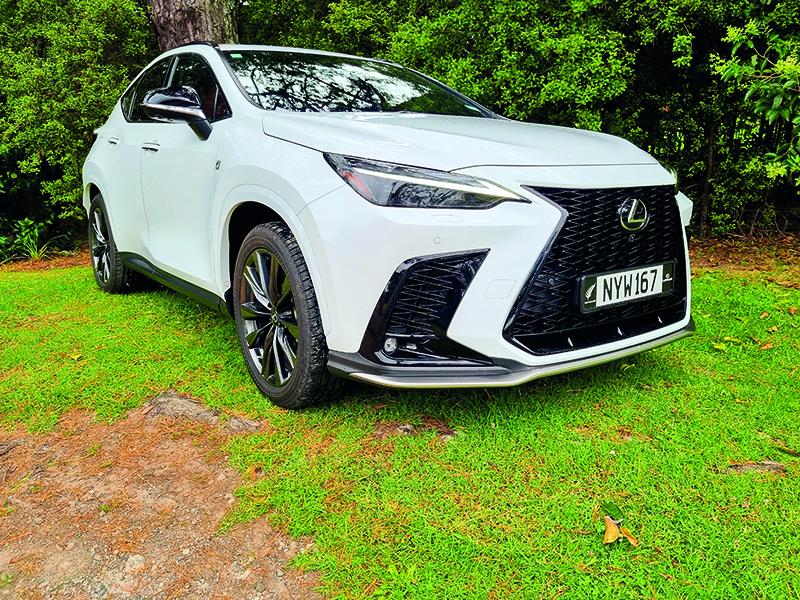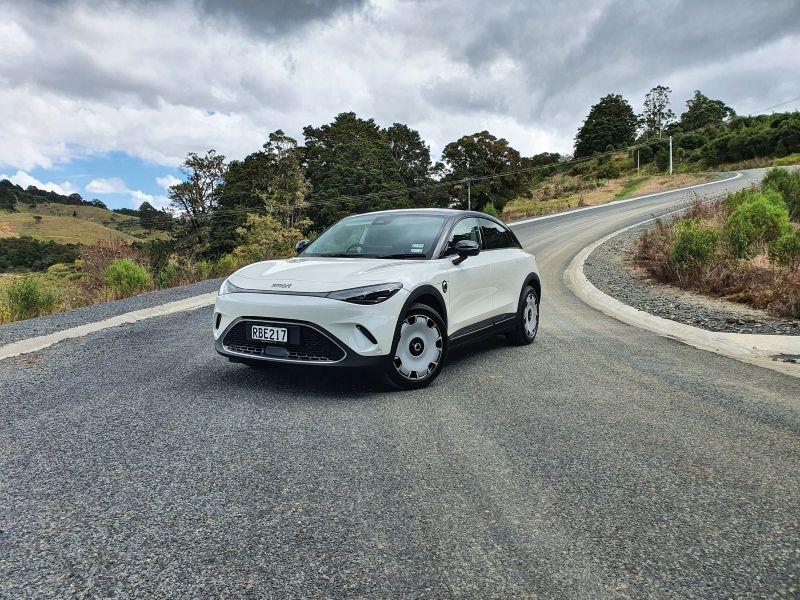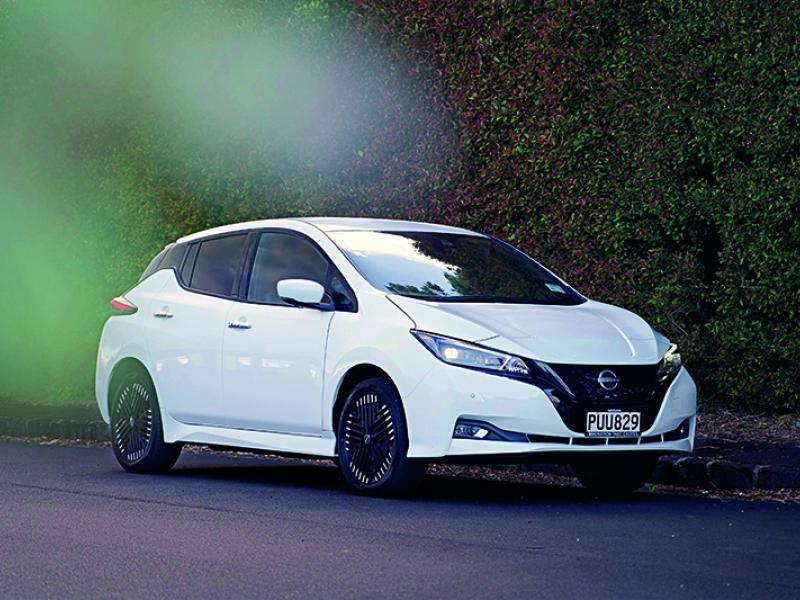Lexus started on its road to electrification with hybrid electric powertrains for its sedans and small SUV range. It now has an EV and (tested) a range-leading powerhouse of a plug-In hybrid.
The NX450h+ F Sport – to give it it’s somewhat mouthful of a name – doesn’t really fit the Lexus description of a compact luxury crossover given it is more along the lines of a mid-size model.
If any further confirmation of this is needed, look at that grille – that is not the grille you’ll find on a compact crossover!
However, there is no mistaking it as being anything but what you’d find on a Lexus – albeit a Lexus with technology even many Lexus owners would not expect to find.
But let’s start with what Lexus would consider to be the most significant aspect of the NX which is, drum roll please, the NX450+ F Sport is the first Lexus plug-in hybrid.
PHEVs have not taken hold in New Zealand as well as the conventional petrol hybrid (self-chargers). Year-to-date in 2022, some 513 PHEV SUVs were registered across private and non-private sectors.
There were 983 petrol hybrids registered in that same time, and the story is much the same in other markets but – despite this and Lexus’ proven experience with self-charging hybrids, the brand is following through on its road to electrification with something of an experiment.
So, the NX450h+ F Sport has a petrol engine – and sips 95-octane by the way – working in conjunction with two electric motors, one per axle and hence the all-wheel-drive appellation.
These motors are powered by an underfloor 18.1kWh battery, capable of delivering an electricity alone approximate range of around 87km according to Lexus. Real world, that’s closer to 69km but there are conditions and driving styles to be factored into that.
The NX can take two forms of charging: Mode 2 (slow charge) or a Mode 3 home wallbox 7.4kW station, both of which are AC chargers. The Lexus does not have the ability to take advantages of DC charging, but then it doesn’t really need to.
The – accepted – daily commute for the average driver can be handled almost entirely on the electric side of the ledger and even if it doesn’t, the hybrid functionality of the Lexus will keep the reliance on petrol down to a minimum, leaving a full tank for the weekends.
All the areas of excellence you expect of Lexus – smooth mechanicals, superb chassis dynamics, high levels of luxurious trim materials and comprehensive safety features – are all here, but with the 450+ being new territory, Lexus designers decided to try new things, including the experimental door handles which take a little getting used to in their operation.
Display screens are bigger so the multi view camera images are clearer and the bigger screens are more user friendly, with more obvious, visual and more intuitive controls, helped by Lexus’s removal of the centralised trackpad controller.
This means a greater reliance on the touchscreen and hence the controllability functions as part of the complete driver/vehicle interface have seen significant improvement, especially in speed and accuracy and have the added convenience of ‘’Hey Lexus” voice recognition.
The interior is very roomy and light thanks in part to the moonroof and in part due to the interesting colourways Lexus tends to come up with.
A word on the comfort levels of those seats, they are hard to improve on. Heated, ventilated and 10-way power adjustment for the driver, 8-way for the passenger, the sports seats do sit low in the cabin, which while first feeling a little odd in what is a medium-sized SUV actually make for greater control on the part of the driver.
The design of the NX helps of course, with a low and wide centre of gravity contributing to its impressive handling characteristics.
In summary, Lexus grand experiment has very little downside and does not suffer from a loss of cargo or cabin space because of its PHEV nature.
The only downside we can see is the price premium with the NX450+ F Sport commanding the highest price of the three model NX line up, but then it is billed as a performance variant and delivers the greatest power and torque and the best fuel economy figures.
No NX model qualifies for a rebate, but then, there’s no fee either.






